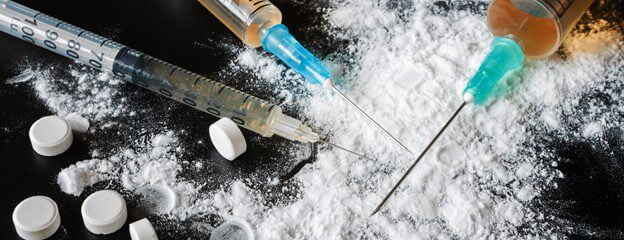Uncategorized
Understanding Phencyclidine (PCP) Use Disorder: A Comprehensive Guide
Phencyclidine (PCP), also known as “angel dust,” is a powerful dissociative drug with a notorious reputation for its unpredictable and often dangerous effects. While it was originally developed as an anesthetic, PCP has become infamous for its recreational use and the significant health risks it poses. In this comprehensive guide, we will explore PCP use disorder, the phenomenon of “sherm,” phencyclidine screening, and the broader implications of PCP abuse.

What is Phencyclidine (PCP)?
Phencyclidine (PCP) is a synthetic dissociative drug that was first synthesized in the 1950s by Parke-Davis, a pharmaceutical company. It was initially developed for use as an intravenous anesthetic under the brand name Sernyl. However, due to its severe side effects, including hallucinations, agitation, and delirium, its medical use was discontinued in humans in the 1960s. Despite this, PCP continued to be used as a veterinary anesthetic for a short period before being completely phased out.
Chemically, PCP is classified as an arylcyclohexylamine, which is a class of dissociative anesthetics that includes other compounds like ketamine. PCP works primarily by blocking the NMDA receptor in the brain, which is involved in pain perception, memory, and learning. This blockade leads to the drug’s characteristic dissociative effects, which can include feelings of detachment from reality and self.
What is Phencyclidine Use Disorder?
Phencyclidine use disorder is a medical condition characterized by the compulsive use of PCP despite its harmful effects on the user’s health and well-being. This disorder is recognized in the Diagnostic and Statistical Manual of Mental Disorders (DSM-5) and is categorized under “Hallucinogen Use Disorder.” The disorder can range from mild to severe, depending on the number of symptoms present and their impact on the individual’s life.

Symptoms of Phencyclidine Use Disorder
The symptoms of PCP use disorder can be broadly categorized into behavioral, physical, and psychological effects. Common symptoms include:
- Craving and Compulsive Use: A strong desire to use PCP, often leading to compulsive drug-seeking behavior.
- Tolerance: Needing increasing amounts of PCP to achieve the desired effects.
- Withdrawal Symptoms: Experiencing physical and psychological symptoms when not using PCP, such as cravings, anxiety, agitation, and depression.
- Neglect of Responsibilities: Failing to fulfill obligations at work, school, or home due to PCP use.
- Continued Use Despite Harm: Persisting in PCP use even when it causes physical, psychological, or social problems.
- Social and Interpersonal Issues: Strained relationships with family, friends, and colleagues due to PCP use.
- Risky Behaviors: Engaging in dangerous activities while under the influence of PCP, such as driving or operating machinery.
Causes and Risk Factors
The exact cause of phencyclidine use disorder is not fully understood, but it is likely to involve a combination of genetic, environmental, and psychological factors. Some risk factors for developing PCP use disorder include:
- Genetics: A family history of substance use disorders can increase the likelihood of developing PCP use disorder.
- Mental Health Disorders: Individuals with mental health conditions, such as depression, anxiety, or post-traumatic stress disorder (PTSD), may be more susceptible to PCP abuse.
- Environmental Factors: Exposure to environments where drug use is prevalent, such as certain social circles or communities, can increase the risk of PCP use.
- Trauma and Stress: Experiencing trauma, chronic stress, or adverse childhood experiences can contribute to the development of substance use disorders.
What is Sherm?
“Sherm” is a slang term used to refer to cigarettes or marijuana joints that have been dipped in PCP or embalming fluid. Smoking sherm can result in rapid and intense psychoactive effects, as the drug is quickly absorbed through the lungs into the bloodstream. This method of administration is particularly dangerous due to the unpredictable and often severe effects of PCP.

Effects of Smoking Sherm
The effects of smoking sherm can vary widely depending on the amount of PCP used, the individual’s tolerance, and their mental and physical state. Common effects include:
- Euphoria: Users may experience an initial rush of euphoria and a sense of well-being.
- Dissociation: A hallmark effect of PCP is dissociation, where users feel detached from their body and surroundings.
- Hallucinations: Smoking sherm can cause vivid hallucinations, including visual, auditory, and tactile distortions.
- Agitation and Aggression: PCP can induce agitation, paranoia, and aggressive behavior, making users a danger to themselves and others.
- Numbness: The anesthetic properties of PCP can lead to numbness and loss of pain sensation, increasing the risk of injury.
- Impaired Motor Skills: Users may experience difficulty with coordination and balance, similar to severe alcohol intoxication.
What is Phencyclidine Screening?
Phencyclidine screening refers to the process of testing individuals for the presence of PCP in their system. This can be done using various biological samples, such as urine, blood, saliva, or hair. Screening for PCP is often conducted in clinical settings, workplaces, or forensic investigations to detect drug use and monitor substance abuse.
Methods of Phencyclidine Screening
- Urine Testing: Urine tests are the most common method for PCP screening. PCP can be detected in urine for up to 7-14 days after use, depending on the frequency and amount of drug use.
- Blood Testing: Blood tests can detect PCP for up to 24 hours after use. This method is typically used in emergency situations or forensic investigations to determine recent drug use.
- Saliva Testing: Saliva tests can detect PCP for up to 1-3 days after use. These tests are less invasive and can be used for quick screening in various settings.
- Hair Testing: Hair tests can detect PCP use over a longer period, up to 90 days or more, depending on hair length. This method is often used in forensic investigations or to monitor long-term drug use.
Importance of Phencyclidine Screening
Phencyclidine screening is important for several reasons:
- Diagnosis and Treatment: Screening helps healthcare providers diagnose PCP use disorder and develop appropriate treatment plans.
- Workplace Safety: Employers may conduct PCP screening to ensure a safe and drug-free workplace, particularly in safety-sensitive industries.
- Legal and Forensic Purposes: Phencyclidine screening can provide evidence in legal cases involving drug use, such as DUI charges or child custody disputes.
- Monitoring and Prevention: Regular screening can help monitor individuals in substance abuse treatment programs and prevent relapse.
The Risks and Dangers of PCP Use
The use of PCP carries significant risks, both in the short term and long term. The unpredictable nature of its effects, combined with its potential for addiction, makes it a particularly dangerous drug.
- Acute Psychological Effects: The intense hallucinations and delusions caused by PCP can lead to dangerous behaviors, including self-harm and violence. Users may become paranoid and exhibit extreme agitation, making them a danger to themselves and others.
- Physical Health Risks: PCP’s anesthetic properties can result in severe physical harm. Users may injure themselves without feeling pain, leading to untreated injuries and complications. Additionally, high doses of PCP can cause seizures, coma, and death.
- Addiction and Dependence: PCP is highly addictive, and regular use can lead to physical and psychological dependence. Users may develop a tolerance, requiring higher doses to achieve the same effects, and experience withdrawal symptoms when not using the drug.
- Long-Term Cognitive Impairment: Chronic use of PCP can lead to lasting cognitive deficits, including memory loss, impaired concentration, and difficulties with learning. These effects can persist long after cessation of use.
- Legal Consequences: PCP is classified as a Schedule II controlled substance in the United States, meaning it has a high potential for abuse and is illegal to manufacture, distribute, or possess without a prescription. Conviction for PCP-related offenses can result in severe legal penalties.
Treatment and Recovery
For individuals struggling with PCP use disorder, professional treatment and support are crucial. Treatment typically involves a combination of behavioral therapies, counseling, and, in some cases, medication to manage withdrawal symptoms and underlying mental health conditions.
- Detoxification: The first step in treating PCP use disorder is detoxification, where the body is cleared of the drug. This process should be conducted under medical supervision due to the potential for severe withdrawal symptoms.
- Behavioral Therapy: Behavioral therapies, such as cognitive-behavioral therapy (CBT) and contingency management, are effective in helping individuals address the psychological aspects of addiction. These therapies focus on changing negative thought patterns and behaviors associated with drug use.
- Support Groups: Participation in support groups, such as Narcotics Anonymous (NA), can provide individuals with a sense of community and accountability. Sharing experiences with others who have faced similar challenges can be a valuable source of encouragement and motivation.
- Medication: While there are no specific medications approved for treating PCP addiction, medications may be prescribed to address co-occurring mental health conditions, such as depression or anxiety, which can complicate recovery.
- Aftercare and Relapse Prevention: Long-term recovery from PCP addiction requires ongoing support and relapse prevention strategies. Aftercare programs, including continued therapy and support group participation, can help individuals maintain sobriety and navigate
